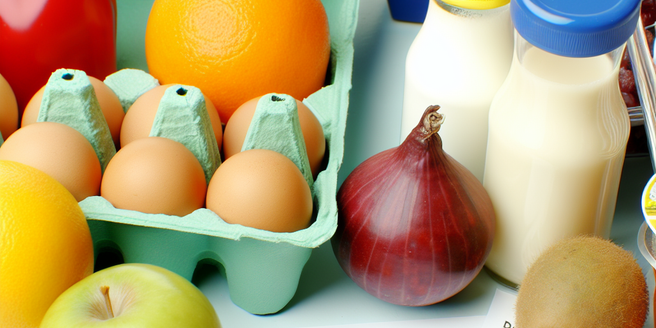Introduction to Nutritional Education for SNAP Recipients
Improving our understanding of nutrition is essential to improving our health. Nutritional education plays a key role in providing SNAP recipients with the knowledge required to make healthier food choices. This concept encompasses a range of topics from learning to understand and compare food labels, understand portion sizes, and learn about the health benefits of various food groups. Indeed, nutritional education is a cornerstone for those who want to use SNAP to create healthier dietary habits.
At the heart of nutritional education is the idea of empowerment. By providing SNAP recipients with knowledge about nutrition, we offer them a means of improving their health and wellbeing. With the right knowledge, recipients can use their SNAP benefits to create meals that are not only filling but also nutritious.
The goal of this nutritional education is not just to provide one-time information. Instead, it aims to foster a lifelong understanding of nutrition. This equips SNAP recipients with the ability to consistently make healthier food choices throughout their lives. Through nutritional education, we can work together to reduce food insecurity and increase the health of our communities.
Understanding the Importance of Nutrition
The importance of nutrition cannot be overstated. A well-balanced diet is essential for maintaining good health, preventing chronic diseases, and promoting overall well-being. However, understanding the role of nutrition is often overlooked.
What we eat significantly affects our health. Nutrient-rich foods provide our bodies with the energy, proteins, essential fats, vitamins, and minerals to live, grow, and function properly. We need a wide variety of different foods to provide the right amounts of nutrients for good health.
Balanced nutrition also plays a crucial role in preventing certain health conditions such as heart disease, diabetes, and certain types of cancer. Moreover, good nutrition can promote healthy body weight, reducing the risk of obesity and obesity-related diseases. By helping SNAP recipients understand the importance of nutrition, they can not only improve their current health, but also their future health outcomes.
How Does SNAP Support Nutritional Goals?
SNAP, the Supplemental Nutrition Assistance Program, provides benefits to buy nutritious food for eligible low-income Americans. But how does it support its recipients’ nutritional goals? Well, the primary purpose of SNAP is to augment the food purchasing power of eligible low-income households to improve their nutrition and alleviate hunger.
However, SNAP does more than just provide financial assistance. It also provides resources for nutritional education. These resources are designed to help recipients make healthy food choices within a limited budget and choose active, physically fit lifestyles consistent with the current Dietary Guidelines for Americans.
Ultimately, SNAP supports nutritional goals by providing the financial means and education for recipients to access and choose nutritious food. By doing so, SNAP helps to address food insecurity and support healthier communities.
Nutrition Myths and Facts: Clearing the Confusion
In the world of nutrition, misinformation can spread quickly, leading to confusion and making it hard for people to make informed dietary decisions. This can be particularly harmful for SNAP recipients who are trying to use their benefits in the most nutritious way possible.
Hence, it’s crucial to debunk these myths and replace them with facts. Nutritional education is a powerful tool in this case, providing accurate, science-backed information about nutrition. This can help SNAP recipients to make healthier food choices and steer clear of unhelpful, and sometimes damaging, nutrition myths.
A few common myths include the belief that carbs are bad, the idea that all fats are unhealthy, and the misconception that dietary supplements can make up for a poor diet. Through nutritional education, SNAP recipients can learn the truth about these food myths and many others.
Balancing Nutrients on a SNAP Budget
Balancing nutritious food on a SNAP budget can emerge as a significant challenge. It often seems like healthier foods are more expensive, however, with a bit of planning, it’s possible to create a well-balanced, nutritious meal plan without blowing the budget.
Contrary to popular belief, many nutritious foods are affordable. For instance, grains like brown rice and oats, legumes like lentils and chickpeas, fresh and canned fruits and vegetables, lean proteins, and dairy products can all be an affordable part of a SNAP diet.
Furthermore, by understanding how to use these products in versatile ways, SNAP recipients can get the most nutrition out of every SNAP dollar. This includes knowing how to substitute cheaper products without sacrificing nutritional value, how to use leftovers wisely, and how to buy in-season or frozen fruits and vegetables to save money.
Practical Tips for Healthy Eating with SNAP
Healthy eating with SNAP is not just about the foods you choose but also about how you prepare and cook your meals. Practical tips can help SNAP recipients to maximize their benefits while maintaining a nutritious diet.
Such tips may include batch cooking and meal planning to maximize resource use and minimize waste, using herbs and spices to make meals more flavorful without resorting to less healthy options like high-sodium sauces, understanding portion sizes to avoid overeating, and making the most of in-season produce which is often cheaper and more flavorful.
Remember, the ultimate goal isn’t perfection—it’s improvement. Each small change made towards a healthier diet is a step in the right direction.
Case Studies: Success Stories of SNAP Recipients
We see many success stories among SNAP recipients, showing that it’s indeed possible to use SNAP benefits to maintain a nutritious diet. These success stories serve as proof of the value of SNAP and its potential to improve nutrition, health, and food security among low-income individuals and families.
For example, we can take the story of a single mother who has managed to maintain a healthy diet for her family by using SNAP benefits. With the help of SNAP education resources, she learned how to meal-prep and batch cook, which helped her save money, time, and avoid relying on less nutritious fast food. Her children are now eating fruits and vegetables daily, something that had been a struggle prior to her SNAP education.
Such stories show how SNAP, combined with nutritional education, can truly make a difference. They inspire and show a path to those who are new to the program or struggle to use it effectively.
Addressing Nutritional Challenges for SNAP Recipients
Despite SNAP’s help, many recipients still face notable nutritional challenges. These challenges often include a lack of access to grocery stores with fresh produce, limited time to prepare and cook meals, and the high cost of healthy foods compared to less nutritious options. These obstacles require strategic solutions.
First is increasing access to fresh food items. This could involve promoting farmer’s markets in low-income neighborhoods or creating partnerships with grocery stores to accept SNAP benefits. Next is providing resources and education around quick and healthy meals. SNAP recipients, who often work multiple jobs or long hours, can greatly benefit from understanding how to create quick, nutritious meals.
The third challenge, affordability, is more complex. While SNAP helps to alleviate the burdens of food insecurity, rising food prices continue to be an issue. Continued advocacy for more funding for SNAP can help address this challenge and ensure all individuals have access to a nutritious diet.
Creating a Healthy, Affordable Meal Plan with SNAP
Creating a healthy, affordable meal plan with SNAP benefits is a skill that can greatly enhance the SNAP experience. By incorporating nutritional education and practical insights, recipients can maximize their benefits and enhance their dietary quality.
Inventorying pantry, fridges, and freezers can be a good starting point. This way, recipients can avoid buying redundant items and instead focus on supplementing what they already have. Next, keeping an eye on weekly grocery ads can steer recipients towards discounted items, particularly fresh produce and lean proteins.
Then comes the meal planning, which should prioritize nutrient-dense, diverse meals that are budget-friendly. Cooking in bulk and repurposing leftovers can also stretch SNAP benefits further while minimizing food waste and saving time.
The Future of Nutritional Education in SNAP Programming
Looking ahead, the role of nutrition education in SNAP programming will likely continue to grow. As more research emerges on the role of nutrition in health, it’s clear that nutrition education needs to be a staple part of SNAP programming.
There is a need for continued innovation, whether that’s implementing more technology-based educational resources, expanding the breadth of languages that educational resources are offered in, or creating more partnerships between SNAP and local farmers or food banks.
Furthermore, as the USDA continues to explore the direct impacts of SNAP education on dietary quality and health outcomes, we may see an increased focus on providing even more tailored nutrition advice to SNAP recipients. This evolution will keep SNAP at the forefront of addressing food insecurity and assisting low-income Americans in achieving a healthier dietary pattern.



